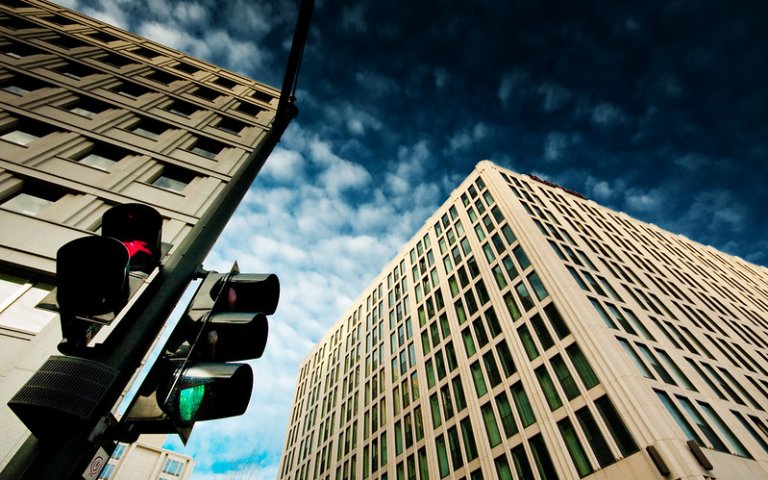A traffic light route to ending the economic lockdown
16 April 2020
Easing the lockdown through a traffic light system could help to reboot the economy, provide a clear sense of direction and install hope, according to new proposals set out by UCL.

The proposals have been published as a briefing paper, co-authored by economists Professor Paul Ormerod (UCL Computer Science) and Dr Gerard Lyons, former economic adviser to Boris Johnson.
The framework suggests that the lockdown is followed by three phases: Red (slight easing of restrictions but with strict caution while risk is still high), Amber (conditions improve but we still need to be careful) and Green (when medical experts give the all clear). The authors suggest lockdown could be eased from early May.
The blueprint is one of several papers being circulated in the Cabinet, as ministers debate a lockdown exit strategy, and come at a timely moment as other EU countries such as Austria and Italy announce easing their lockdown measures.
“A lockdown is necessary to limit the spread of the virus and save lives, but it is not feasible or practical to prolong it for too long. A long lockdown will wipe out large swathes of the economy. There will be a negative impact both financially and mentally on too many people.”
“While full support must be provided to the health specialists, on a parallel track the economic experts should be planning now, for an exit strategy from the lockdown and for a restarting of the economy. This has to be in addition to the implementation of policy, to minimise the hit to income and to demand,” said Professor Ormerod.
Traffic light system for a lockdown exit strategy:
Red phase (May 1)
- Deliberately called red to ensure people think before they act
- Visiting friends and family allowed, but no visits to grandparents
- More – but not all – types of shops could open and they would have to exercise strict social distancing, as most supermarkets do now.
- Travel should still be discouraged and many international flights banned.
Amber phase (May 22)
- Private car travel no longer limited
- In order to minimise pressure on public transport, and crowds, there would have to be attempts to vary the rush-hour, with different opening and closing times.
- Wearing masks and disposable gloves could be compulsory when using public transport.
- Restaurants could reopen but with strict seating demarcations, to uphold social distancing.
- Home working advised for those that can.
Green phase (June 13)
- Public fully released from lockdown if health experts allowed it
- Sporting events or mass gatherings could take place, and places of worship reopen.
- International travel could return to normal.
The framework for the traffic light system has been developed using the analytical framework of epidemiological models, with key behavioural insights from economics.
Professor Ormerod adds: “Epidemiological models have provided the intellectual underpinning of a policy for lockdown. They are crucial for helping to predict the way in which the virus spreads and signalling future challenges, such as the second wave of infections.
“However, behaviour will be different after this first wave, either because of the lessons people have learned during this crisis, or because of the constraints placed upon them by rules and regulations. As economists, we are used to the idea that people alter their behaviour as the set of incentives which faces them changes, and that’s why economists will have a key part to play in the recovery.”
The authors explain that the traffic light phases also allows time for leaders and policymakers to develop a 3 T’s mitigation strategy alongside– testing, tracking and treatment – which will be crucial during the period of a vaccine gap.
The 3 T strategy would involve mass testing for active disease, exploring technology options for tracking who has been tested and who they’ve come into contact with, and treatment which involves both developments towards a vaccine, as well as progress towards flattening the curve, reducing pressure on the NHS and demands on the limited number of Intensive Care Unit beds.
Links
Image
- Traffic lights. Credit: Andreas Levers via Flickr
 Close
Close

